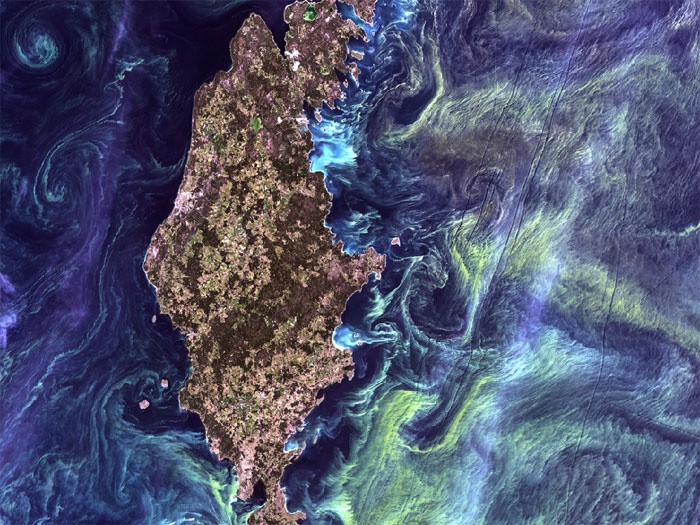One of the most famous painters in the world, Vincent Van Gogh, is immortalized by his ever-iconic "Starry Night," but what if such scenery could play out in real life?
Luckily for Van Gogh lovers, NASA has captured a real-life Starry Night from space!

A Starry Night in the Baltic Sea
Massive concentrations of greenish phytoplankton swirl like the famous Starry Night in the deep sea surrounding Gotland, a Swedish island in the Baltic Sea, according to NASA's description of this otherworldly image.
Almost all ocean food chains start with phytoplankton, tiny marine plants. When nutrients are brought up to surface waters that are exposed to sunlight, deep currents cause phytoplankton populations to explode or bloom, as is the case in this image.
Additionally, the water's nutrient-rich sunlight supports these small plants' growth and reproduction.
But behind this rich and beautiful image, the Landsat satellite was also able to gather data from various observations that could advance our understanding of our planet.
NASA claimed that Landsat aids in our understanding of how our globe is evolving, from calculating the speed of Antarctic glaciers to tracking water consumption in agriculture fields in the western United States to observing deforestation in the Amazon rainforest.
All About Phytoplankton Blooms
Similar to land plants, phytoplankton uses photosynthesis to convert solar energy into chemical energy by using chlorophyll to absorb light. They exhale oxygen while consuming carbon dioxide.
According to NASA, All phytoplankton photosynthesize, but some consume other species to gain additional energy.
The growth of phytoplankton relies on the presence of carbon dioxide, sunshine, and nutrients. Just like land plants, phytoplankton needs varying amounts of nutrients like nitrate, phosphate, silicate, and calcium, depending on the species.
Additionally, since iron concentrations are so low, phytoplankton development is restricted in a majority of areas in the ocean because they need trace levels of iron.
Phytoplankton populations can expand rapidly under the correct circumstances, a phenomenon known as a bloom. Oceanic blooms are discernible in satellite photos and can span hundreds of square kilometers. Although a bloom may extend for several weeks, a phytoplankton's life cycle lasts only a few days.
Related Article : NASA's James Webb Space Telescope Finds Galaxies Merging Around a 'Monster' Black Hole
This article is owned by Tech Times
Written by Joaquin Victor Tacla
ⓒ 2025 TECHTIMES.com All rights reserved. Do not reproduce without permission.




